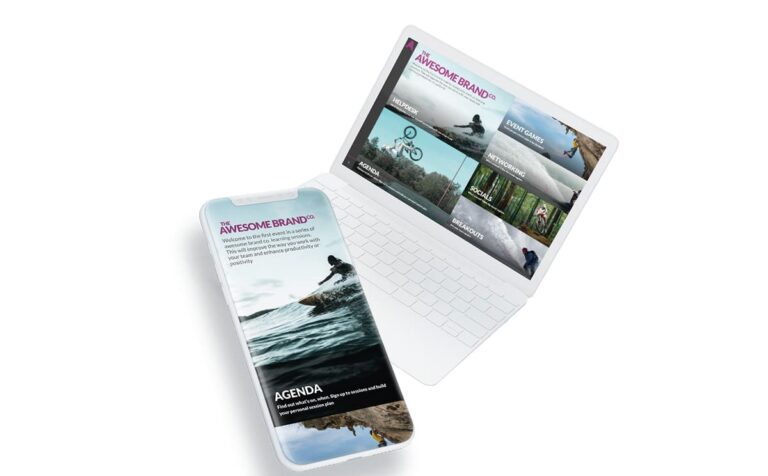Run a 3-day event or power a village for a year?
It is no surprise to any of us that the world needs to move towards more positive change in terms of climate emissions and the preservation of our planet. The talks at COP26 highlighted, on a global scale, the complexity of this issue and the call not just for transformation at an industrial level but also at an individual one.
Before we can look at the changes that we, as individuals and companies involved in the events industry, can make, we should look at the data around emissions and get a detailed picture of what is going on. Without analytics, we could be wildly fumbling in the dark, imagining that our actions were making huge differences when in reality, there may be simpler, more consistent changes that we can adopt to make a meaningful impact.
Putting Events Under the Climate Microscope
Picture the last event that you attended in person. Were there lanyards and badges? Did you get freebies from the exhibition stands? How many business cards did you get given? Surely you grabbed a coffee and lunch to take away? How did you travel to the event? Train, plane, car?
There’s no judgement here. Your situation would have been very similar to all of the other attendees, employees and organisers of the event. At a single international event, we could be talking about you and 20,000 other people.
20,000 cups of coffee. 18,000 lanyards and badges. 40,000 business cards. 20,000 individual journeys.

There are many elements involved here. We can make it easier on ourselves and focus on just one of the factors above to dive more deeply into – transport.
When attending an international event, it is commonplace to be travelling upwards of 1200 miles and in the interests of time and convenience, taking an aeroplane would be standard practice.
A one-way journey of this type would produce 98kg of CO2 per person.
This amount of carbon dioxide is the equivalent to powering a home for 10-days, it would take a tree 4-years to absorb and would be enough to charge 53,000 iPhones.
Staggering, isn’t it?
Alternative Travel Options
We can gain more context to these figures by comparing them to alternative modes of transport and because the convenience of travel is an important factor with busy work schedules, approximate journey times have also been included in this analysis.
Option 1: Flight
Carbon Emission: 98kg of CO2 Journey Time: 7 hours
(Including a train journey to the airport and a taxi to the venue)
Option 2: Petrol Car
Carbon Emission: 177kg of CO2 Journey Time: 32 hours door-to-door
(Including 5, 1-hour breaks and a 10-hour overnight stay)
Option 3: Electric Car
Carbon Emission: 34kg of CO2 Journey Time: 34 hours door-to-door
(Including charging breaks and a 10-hour overnight stay)
Option 4: Train
Carbon Emission: 44kg of CO2 Journey Time: 22 hours

Transport emission data provided by Other Way
For interest, and those cycling enthusiasts among us, here’s how the data looks for bicycles:
Option 5: Standard Bicycle
Carbon Emission: 34kg of CO2 Journey Time: 12.5 days
Option 6: Electric Bike
Carbon Emission: 18kg of CO2 Journey Time: 11.5 days
Taking all of the above into account, it is clear that plane journeys and single-occupancy road trips in a petrol car are comparable to each other due to their high levels of emissions. An electric car journey is 65% better for the environment than flying but stacks up 24-hours more travel time. Using public transport, while a lengthy journey, is 55% better than flying and allows you to have the freedom to rest and work, at the same time as making progress towards your destination.
The Impact of our Choice
Many of us are time-poor individuals with hectic work schedules and family commitments. We need to get to events quickly and in a coherent state! This is often our reality and impacts the choices that we make in terms of travel. We might be taken aback by the data around emissions but when it comes to booking attendance at an event, how many of us will give ourselves a convincing rationale to click ‘buy’ on that flight?
Bringing the attention back for a moment, to that scenario of the ‘international event’ that involves catering for 20,000 visitors. Just in terms of transport, here’s what we’re looking at:

Example event transport emission analysis provided by Other Way
Just by travelling to this event, together we would be contributing 3,100 tonnes of CO2 into our atmosphere.
This amount of carbon dioxide would take 125,000 mature trees a whole year to sequester and is the equivalent to powering a village, of 775 homes, annually with heat and electricity.
Event catering, energy, waste and other consumables aren’t even factored into this extrapolation.
It’s Not All Bad!
Looking at the above, the data is alarming. When you spend time taking it all in, we are presented with a call for a change and an opportunity to rethink the way we approach events. Thanks to innovations in technology, there are a variety of solutions that can enable us to ease the burden of events in terms of carbon emissions while still delivering on an event’s aims and objectives.
As event technology providers, CrowdComms are in a unique situation to offer our clients genuinely alternative choices for content delivery. By structuring your event to reduce the number of physical attendees and providing the option for delegates to access content virtually or in a hybrid capacity, you are already making a big dent in those carbon emissions!
Our hybrid event platform is accessible to on-site attendees via a hybrid event app, optimised for phones and tablets, whilst remote audiences access a web-based version on desktops in the same way they would during an entirely virtual event.
There’s no need to keep a lid on your numbers! Whether you have 100 attendees or 100,000, we can help you to deliver a seamless event, bringing on-site attendees, speakers and sponsors alongside participants thousands of miles away.
Come and talk to us about your next event!
We would like to say a big ‘thank you’ to Alexander Lewis-Jones, Director of Other Way Transport and Climate Consultancy, for working with us to obtain meaningful data for this article. Collaborating with Alex has enabled CrowdComms to take the next step on its journey towards becoming more sustainable. This is just the beginning for us, to stay in the loop, make sure to follow us on LinkedIn, Twitter and Facebook.




